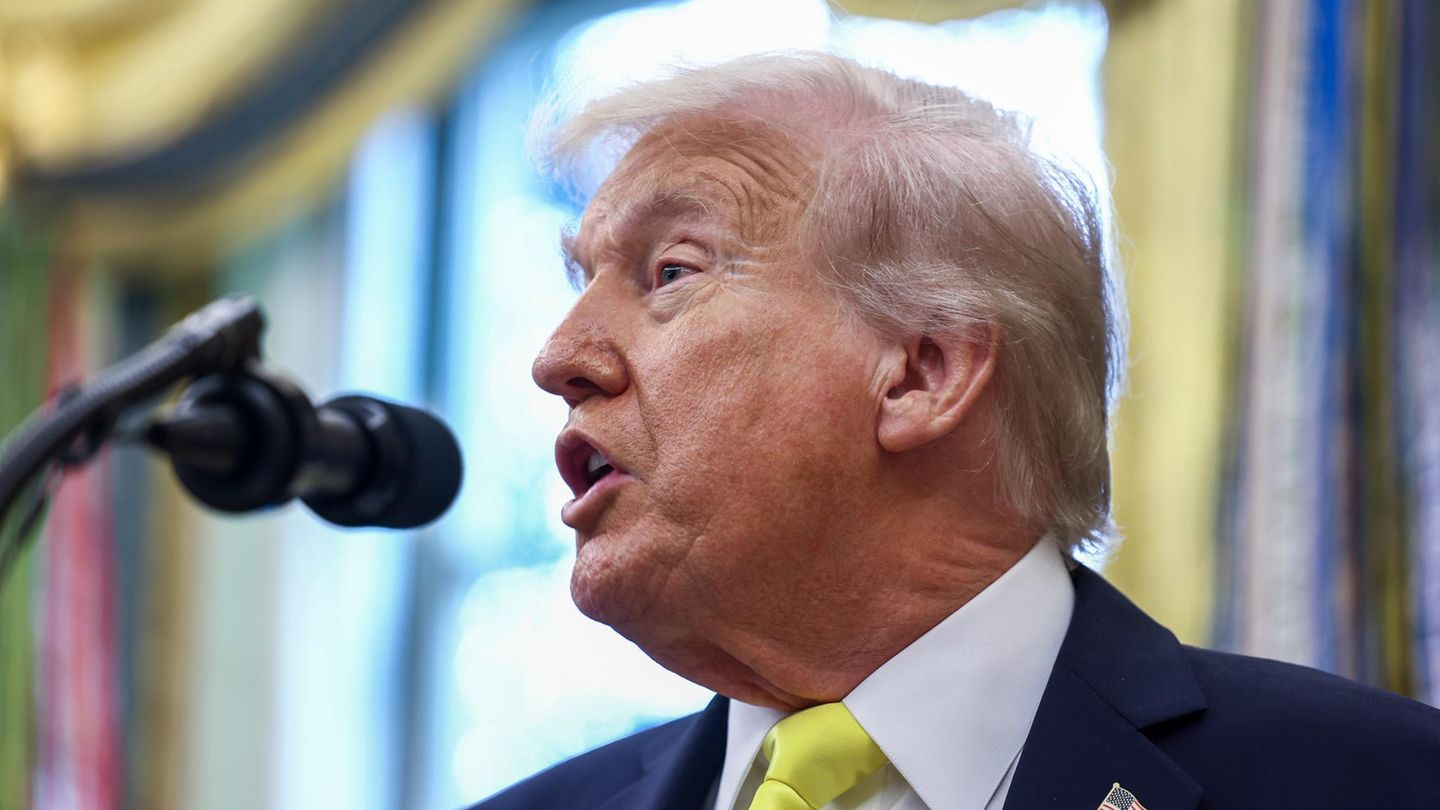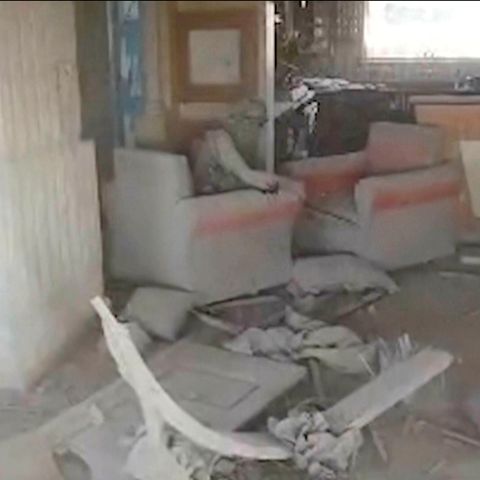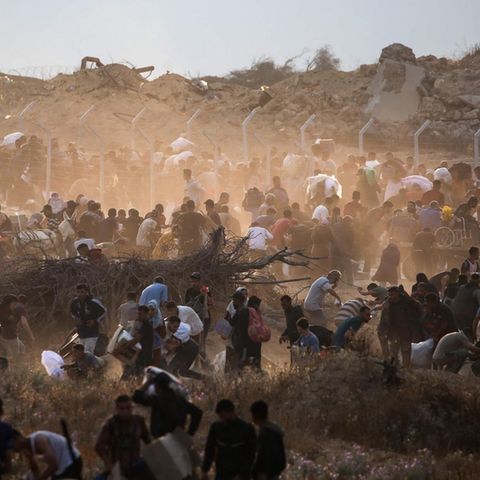Middle East conflict
Trump threatens to kill Hamas
Copy the current link
Add to watchlist
The ceasefire in Gaza is fragile. Israel and Hamas are outdoing each other with threats. The fronts remain hardened. Now the US President is also getting involved.
US President Donald Trump has threatened the terrorist organization with violence in view of alleged executions in the Gaza Strip by the Islamist Hamas. “If Hamas continues to kill people in Gaza, which was not part of the agreement (on the current ceasefire), we will have no choice but to go in and kill them,” he wrote on the Truth Social platform. At the same time, Trump pointed out that Hamas had handed over more hostage bodies in accordance with the agreement. But the Islamists want to continue the fight against Israel. And Israel defeat Hamas.
Trump later made it clear when asked in the White House that US forces would not take action against Hamas if it did not stop killing. There are people “very close by” who would do that – this probably means Israel’s army. They could do it easily, but under US patronage.
On Tuesday, Trump did not appear to be particularly concerned about Hamas’ violence. She cracked down on “very, very bad gangs” and that didn’t bother him much. Then on the same day, Trump warned Hamas to give up its weapons. “And if they don’t disarm, we will disarm them, and that will happen quickly and perhaps violently,” he said.
Hamas wants more time to return more hostage bodies
At the same time, Trump pointed out that Hamas had handed over more bodies of hostages to Israel. “They also said they’re going to behave. We’re going to find out if they behave. If they behave, good,” Trump said. If not, “we’ll take care of it.” Meanwhile, the terrorist organization reiterated in a statement that night that it would take time to return more hostage bodies.
Some of these bodies were in tunnels destroyed by Israel’s army, others were under the rubble of bombed buildings, it said. In order to recover the bodies of more hostages, heavy machinery and equipment will be required to remove the rubble, which cannot currently be brought in because Israel is refusing to import them, the statement continued.
According to the ceasefire agreement that has been in effect for a week, Hamas must hand over a total of 28 hostage bodies to Israel. So far it has handed over the remains of nine hostages. The terrorist organization added in the statement that it would continue to abide by the agreement. At the same time, she blamed Israel for the delay in repatriating hostages. Israel is calling on Hamas to hand over all dead hostages and is threatening to return to war in the Gaza Strip if the agreement is not adhered to.
Hamas and Israel remain irreconcilable
On the first anniversary of the killing of its leader, Jihia al-Sinwar, Hamas vowed to continue the armed struggle against Israel. The flame will not go out, it was said, with a view to the Hamas massacre on October 7, 2023, in which around 1,200 people were killed in Israel and more than 250 others were kidnapped to Gaza.
Sinwar was considered the mastermind of the terrorist attack that sparked the war in the Gaza Strip. According to the Hamas-controlled health authority, nearly 68,000 people have been killed in the war, including scores of women and children.
Meanwhile, Israeli Prime Minister Benjamin Netanyahu emphasized Israel’s determination to take action against the strengthening of its enemies. Iran and its allies surrounded Israel with a “ring of fire” and tried to “strangle” the Jewish state after the Hamas massacre, Netanyahu said in Jerusalem at a memorial ceremony for fallen soldiers. This was not successful.
“We are determined to complete the victory that will impact our lives for years to come.” Israel will “achieve all war goals,” said Netanyahu. This also includes the destruction of Hamas.
Border between Gaza and Egypt remains closed
Meanwhile, the opening of the border crossing between the Gaza Strip and Egypt continues to be delayed. Preparations to open the Rafah crossing to passenger traffic in accordance with the ceasefire agreement continued in cooperation between Israel and Egypt, said the Israeli authority Cogat. Egyptian circles said the opening could be delayed until Sunday.
A spokesman for Cogat reiterated that even after it was opened to passenger traffic, Rafah would not serve as a passage for humanitarian aid deliveries. “This was never agreed upon,” he said. Humanitarian aid should continue to be transported to Gaza via the Kerem Shalom crossing and other border crossings.
As part of the agreement, aid deliveries were expanded. In the first phase, around 600 trucks per day were expected to enter Gaza. After a partial withdrawal of its troops, Israel continues to control more than half of the coastal strip.
Where Gaza should be rebuilt – and where not
Meanwhile, US President Trump’s advisers made it clear that they are urging the two parties to the conflict to move on to the next phase of the peace process. According to Trump’s 20-point plan, a technocrat government would have to be formed at this stage to rebuild the Gaza Strip. According to the plan, Hamas would not be involved, but would be disarmed – something the terrorist organization has so far rejected.
According to the plan, an international peacekeeping force (ISF) would provide security. Reconstruction should initially only begin in the zones that are not under Hamas control, US advisers said. All of this will take a long time to negotiate. It is unclear whether the agreement will actually lead to a long-term end to the fighting in Gaza.
DPA
Lars Nicolayse / cl
Source: Stern
I have been working in the news industry for over 6 years, first as a reporter and now as an editor. I have covered politics extensively, and my work has appeared in major newspapers and online news outlets around the world. In addition to my writing, I also contribute regularly to 24 Hours World.






